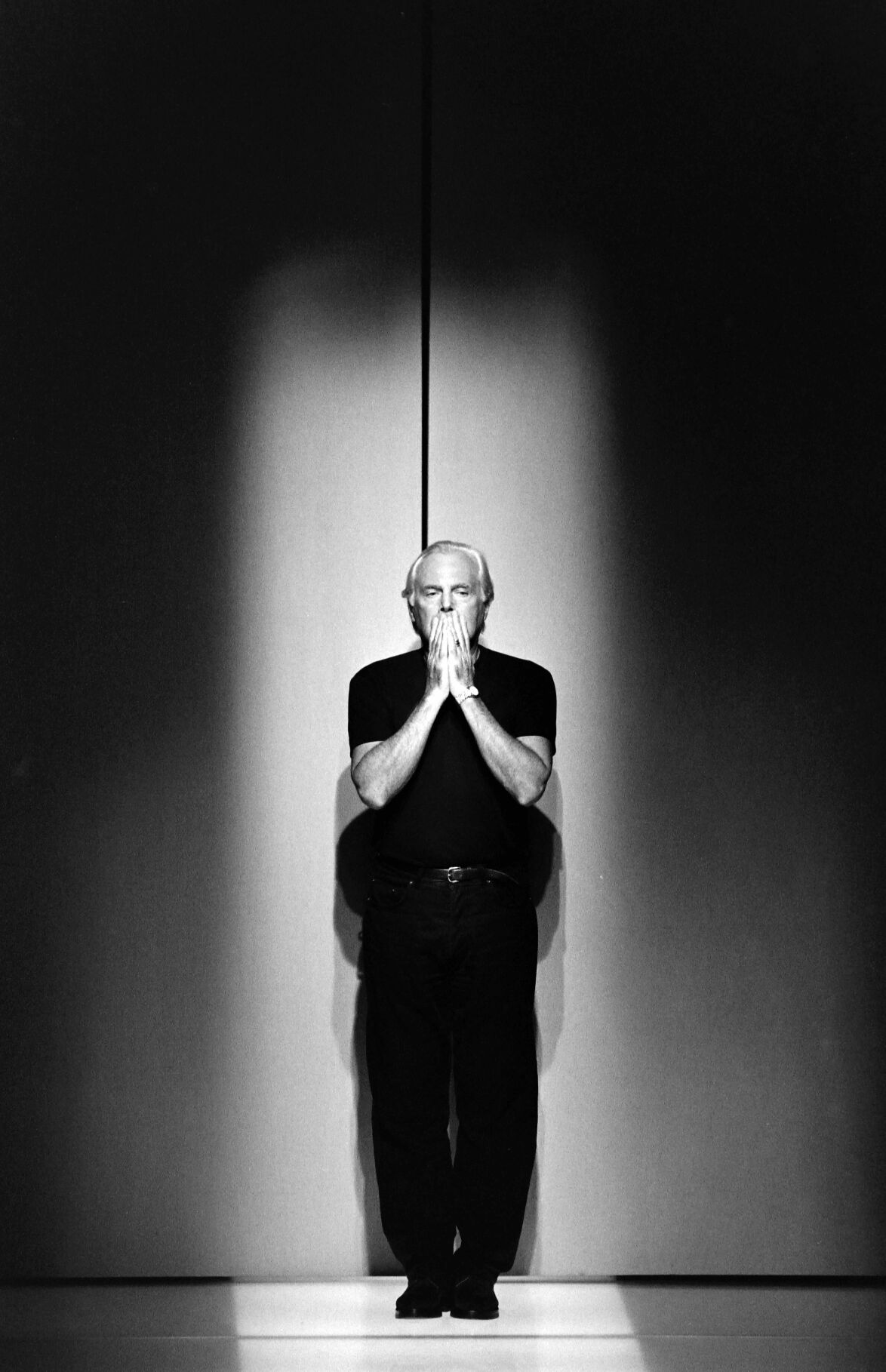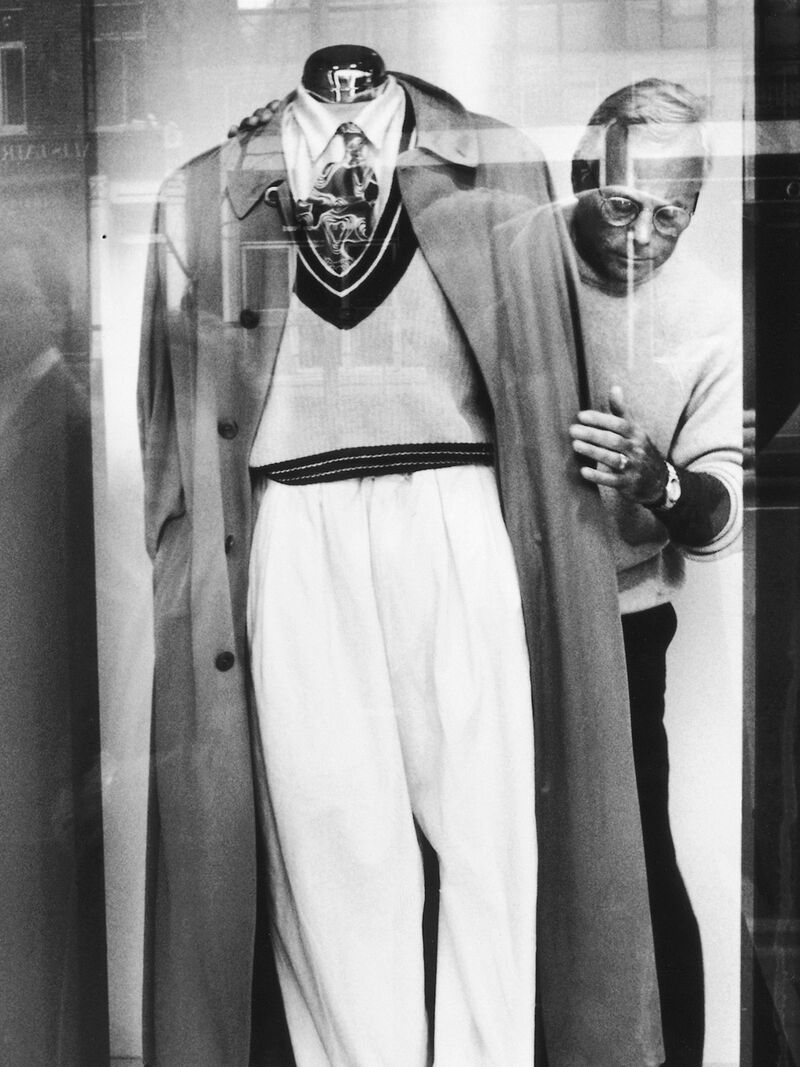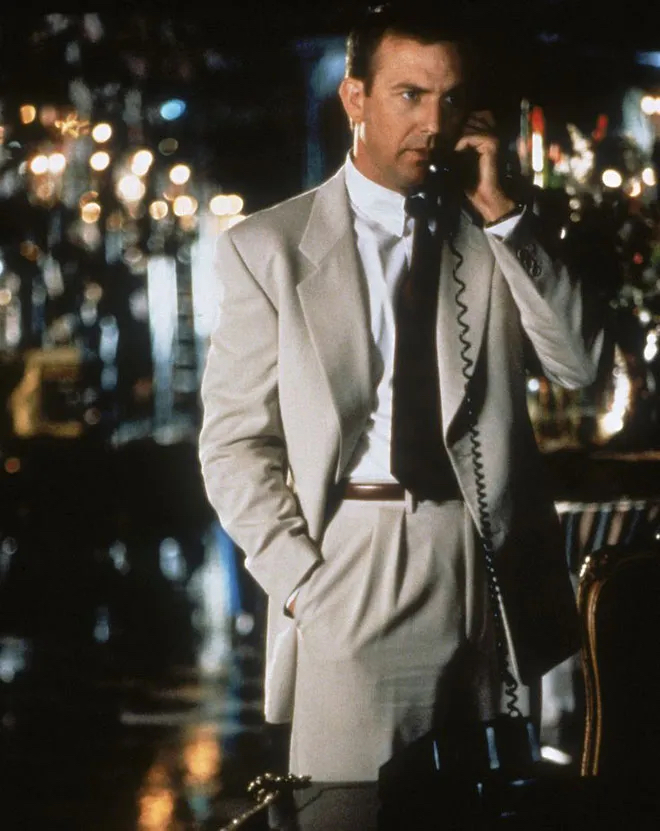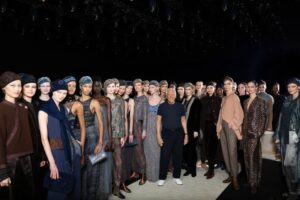Giorgio Armani, the sole owner and the Chairman, Chief Executive and Creative Director of the most successful fashion brand in Italy, dies at 91. The Fashionabc team pays its homage to the “first post-modern designer”.

Giorgio Armani: A true fashion legend. Image Source: Giorgio Armani social media
The iconic fashion designer, reimagined the modern fashion, both men and women with his unique Italian style and elegance. Hailing from humble beginnings, Armani went on to build a brand that leveraged fashion into an empire diversifying into beauty, fragrances, restaurants, hotels and resorts, and nightclubs, valuing £2bn a year.
Following his demise, The Armani Group said in a statement, “Passed peacefully, surrounded by his loved ones. He worked until his final days, dedicating himself to the company, the collections and the many ongoing and future projects. A funeral chamber will be set up on September 6 and September 7 in Milan, the company said, followed by a private funeral at an unspecified date.”
Armani championed a modern wardrobe based on a minimalist, quiet luxury aesthetic that earned him widespread popularity, from the corporate world through to Hollywood A-list including Sophia Loren, Robert De Niro, Tom Cruise, George Clooney, Julia Roberts and Richard Gere. Fashion historians feel the history of menswear can be divided into pre- and post-Armani eras: the designer responded to the cultural mood in the ’80s by removing stiff shoulder pads of suits and tailoring the trousers with a relaxed fullness. And created an iconic fashion moment.
A company statement highlights how Armani ‘crafted a vision that expanded from fashion to every aspect of life, anticipating the times with extraordinary clarity and pragmatism. He has been driven by relentless curiosity and a deep attention to the present and to people… Always mindful of the needs of the community, he has been active on many fronts, especially in support of his beloved Milan.’
This article explores the enduring legacy of Giorgio Armani, the history and the evolution of his luxury brand. His designs set trends and deeply influenced culture. From his early days as a designer to the current relevance of his work, let’s uncover how Armani’s philosophy of minimalism, high quality and sleek tailoring has stayed true to its roots while adapting to contemporary needs.

End of an era. RIP Giorgio Armani
Brand Heritage
Giorgio Armani is a company with fifty years of history. Born in Italy in 1934, Giorgio Armani rose from humble beginnings in Piacenza, a provincial town in northern Italy, to become one of the most influential fashion designers of the twentieth and twenty-first centuries. His vision transcended traditional boundaries of luxury, introducing a style characterised by minimalism, impeccable tailoring and effortless sophistication. Let’s take a closer look at his legacy!
Giorgio Armani, founder of the iconic fashion brand that bears his name, is one of the most influential designers in fashion history. Born in Piacenza, Italy in 1934, Armani studied medicine at the University of Milan. After military service, he left medicine and joined La Rinascente department store, before moving to Nino Cerruti, as an assistant designer. Here, he researched fabrics and designed shirts and ties.
In 1972, Armani and his partner Galeotti opened a studio on Corso Venezia, and founded ready-to-wear label Giorgio Armani SpA in 1975. The minimalist aesthetic, sharp tailoring and high-quality fabrics set him apart from the flamboyant styles of the time, earning him global recognition and a strong consumer base.
Armani held his first menswear runway show in 1975. Per his memoir Per Amore, the collection included “suits made of all-natural fabrics, linen that was made softer by using unconventional treatments so that it draped nicely, jackets that were less structured, trousers that were roomy and flowing. The point was to give those who wore our styles an air that was deliberately between ‘scruffy’ and ‘sophisticated.'”
While Armani suffered from Galeotti’s premature death, the fashion brand continued to gain momentum. Armani’s breakthrough moment came in the 80s, when he revolutionised menswear with softly tailored suits, removing the stiff padding and heavy linings used in men’s suits. It also changed the way women dressed in the corporate world. This design philosophy led to the development of his famous “power suit,” worn by influential figures and corporate leaders.

Giorgio Armani
The landmark moment was when he dressed Richard Gere in ‘American Gigolo’ (1980), cementing his place in popular culture and propelling the luxury fashion brand to international fame. With this film, Armani brought a shift in menswear from traditional fabrics to linen, allowing for a relaxed silhouette, while soft colours like beige and moss green replaced the black and navy of the Seventies. The effortless sensuality balanced with masculinity became a worldwide rage.
After the hit film, Armani became the most sought after fashion designer in Hollywood, designing bespoke garments for Robert De Niro, Kevin Costner, George Clooney and Brad Pitt. Giorgio Armani’s unprecedented influence on red carpet fashion is the subject of a book by Dijanna Mulhearn, ‘Red Carpet Oscars’, for which he wrote the introduction. “It was a mutual attraction that created a lasting dialogue” writes the designer. “Prior to that, fashion designers and international red-carpet occasions rarely crossed paths…These men and women turned to me, immediately intuiting that a new natural and essential elegance could help increase their star power without slipping into anachronistic excesses.”
On 5 April 1982, Time featured Giorgio Armani on its cover, celebrating his style and the way he had “reshaped and restructured the way people dress”. The article describes Armani’s achievements. “Not only the people who wear Armani creations, but also those who wear the myriad of clothes influenced by him, and those whose ideas about clothing are influenced, in some cases unconsciously, by Armani’s attitude.” More than forty years later, that statement holds the same weight.
The 1980s and 1990s witnessed the expansion of his empire into diverse segments, including womenswear, accessories, fragrances, and home decor. Understanding the importance of licensing details he partnered with L’Oréal for his beauty division. Armani unveiled Giorgio Armani women’s fragrance in 1982 and today has over forty fragrances for men and women. He also has a colour cosmetics and skin care line. In 1997, Armani introduced “Emporio Armani”, a diffusion brand targeting younger consumers with stylish, affordable pieces.
For Spring 1990 Giorgio Armani showcased a three-button, high-lapel and slim-shoulder, softly tailored suit which he named The Natural, and which would go on to become a rage. The same year as “The Natural” saw the release of “Made in Milan”, a Martin Scorsese documentary that shows Armani at work, and in which he observed: “Society changes and I change with it. I try to filter my ideas through a daily reality.”

Giorgio Armani working on a collection. Image Source: Giorgio Armani socials
Armani himself was a style icon. A 1990s-era photograph of Giorgio Armani standing in an Italian piazza became fashion history. Here, he wore a complete navy blue outfit — fluid pleated shorts, brown loafers, and a sweater draped casually over his shoulders. Over the years, it has become one of the most popular images on menswear mood-boards both online and as an archival reference! Armani’s commitment to high-quality craftsmanship, understated luxury, and his ability to anticipate fashion trends ensured the brand’s worldwide success.
The “Armani Privé” haute couture collection, in 2005, brought the designer’s minimalist elegance to haute couture. Another celebrated collection is the 2016 Spring Summer ready-to-wear, where he reinterpreted his sharp tailoring with fluid, relaxed silhouettes, demonstrating his adaptability to evolve. In 2021, Armani presented his “Emporio Armani” men’s collection that embraced the casual-wear trend, featuring streetwear-inspired designs, marking a shift in brand direction while staying true to its minimalist roots.
By the 25th anniversary of his company, Armani was immensely successful and powerful. He launched his hotel chain in partnership and assumed control of his manufacturing facilities to ensure vertical integration. Where he could not self-produce, he licensed, but only if he was ensured the last word (it was precisely this criterion that led to his exit from a highly profitable partnership with Luxottica).
Giorgio Armani’s work continues to influence modern fashion, with each collection furthering his legacy of understated elegance, precision tailoring, and timeless sophistication. 2025 marks several milestones for Armani, who celebrated the twentieth anniversary of Privé haute couture by mounting an exhibit at Armani-Silos in Milan. Opened in May and titled Giorgio Armani Privé 2005-2025, the exhibit will run till year- end.
Armani worked till his final days. He was in the process of mounting an exhibition retracing five decades in fashion through a hundred and fifty archival looks at the Pinacoteca di Brera Museum. Expected to open on Sept. 24, the exhibit will be flanked by a digital project titled Armani-Archivio, launched during Venice Film Festival with a catalogue of all Giorgio Armani collections to date. Armani Spring 2026 womenswear was to be unveiled on Sept. 28 with a runway show held in Palazzo Brera, seventeenth-century home to the Pinacoteca, the Biblioteca Nazionale Braidense library and the Brera Academy…
Even as preparations for his big celebration have been taking place, it was clear from this summer that the Italian fashion designer was in poor health. He missed Giorgio and Emporio Armani Men Spring 2026 shows in Milan as he was “recovering at home” from an illness. Instead, Leo Dell Orco, head of menswear design, took the final bow at the shows. Armani also did not attend Privé Fall 2025.
The Armani Power Suit
‘I was the first to soften the image of men and harden the image of women. I dressed men in women’s fabrics and stole from men what women wanted and needed — the power suit.’ With that declaration, Giorgio Armani set the blueprint for a new era of modern, confident and elegant ‘power dressing’.
The breakthrough came with the film ‘American Gigolo’ in 1980, when Richard Gere appeared on screen in a wardrobe designed by Armani. The softly tailored suits, fluid shirts and muted palette marked a turning point in menswear, stripping away stiffness in favour of ease and sensuality. Armani became widely celebrated and also redefined menswear — modern and sophisticated.
One of the most memorable examples came in 1990, when Julia Roberts arrived at the Golden Globes in an Armani suit — complete with shirt and tie. At the 1978 Oscars, Diane Keaton wore a double-breasted Armani suit, accessorised with a scarf and a lapel flower. Rihanna at 2015 BET Awards brought Armani’s vision of power dressing to life with a golden tuxedo—worn without a blouse. It was pure, fearless glamour adapted to her personality!

Kevin Costner in ‘The Bodyguard’. Image Source: Warner Brothers
The path forward for the legacy brand
Few know that beside being the most successful Italian fashion designer in history, Armani was also its most successful entrepreneur. He was sole shareholder in Giorgio Armani S.p.a, which includes fashion, hotels, and homeware. Armani has over 2,000 stores, including the flagship on Via Manzoni in Milan, which includes his luxury and denim collections, a florist, an art-book store, a nightclub, Nobu, and an Armani Hotel.
While the future of Armani has been in speculation since years, the statement issued by the company points to continuity. The company was built over five decades ‘with emotion and patience… His family and employees will carry the group forward in respect and continuity of these values.’
The designer had however hinted about the future of his company back in 2016. ‘I decided to create the Giorgio Armani Foundation in order to implement projects of public and social interest,’ he said at the time. ‘The foundation will also safeguard the governance assets of the Armani Group and ensure that these assets are kept stable over time, in respect of and consistent with some principles that are particularly important to me and that have always inspired my activities as a designer and an entrepreneur.’
5 Lesser-known Facts About Giorgio Armani
Early Career in Medicine: Armani initially studied medicine at the University of Milan. His early exposure to the human form and anatomy would later influence his understanding of garment structure.
Worked in Retail Before Design: Armani’s first job in fashion was at the Milanese department store, La Rinascente. This experience exposed him to high-end fashion.
Military Influence: Armani’s love for sharp, tailored suits is partly inspired by his admiration for military uniforms. The structured simple lines of military attire influenced his approach to clean, sleek designs.
Innovative Use of Fabric: Giorgio Armani was one of the first designers to experiment with unlined garments, which gave his creations a soft, natural drape.
Philanthropic Efforts: Armani is a philanthropist in the fields of healthcare and disaster relief. He has donated substantial amounts to charitable organizations, including those working on breast cancer.
Jasmeen Dugal is Associate Editor at FashionABC, contributing her insights on fashion, technology, and sustainability. She brings with herself more than two decades of editorial experience, working for national newspapers and luxury magazines in India.
Jasmeen Dugal has worked with exchange4media as a senior writer contributing articles on the country’s advertising and marketing movements, and then with Condenast India as Net Editor where she helmed Vogue India’s official website in terms of design, layout and daily content. Besides this, she is also an entrepreneur running her own luxury portal, Explosivefashion, which highlights the latest in luxury fashion and hospitality.










